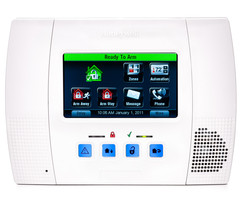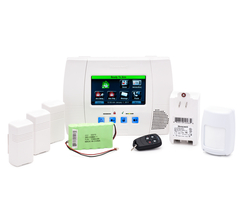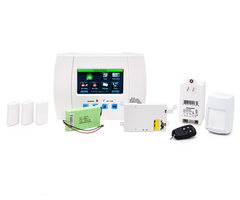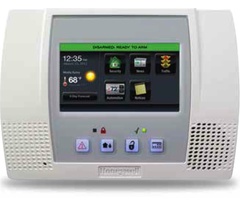How to wire the trigger on Lynx Touch 5100?
The Honeywell LYNX Touch L5100 wireless alarm control panel is a very versatile security system. The system supports up to 63 wireless zones and one wired zone. You can add a WIFI alarm communicator and a cellular communicator. You can even add home automation functionality with the L5100-ZWAVE module. However, one of the things the L5100 lacks, when compared to a VISTA Series alarm control panel, is outputs.
The good news is that most people that get a LYNX Touch have no need for outputs. Also, for those people with more unique needs, there is an available trigger output. Inside the control panel, there is a screw terminal for a negative 3ma trigger. The most common reason for using this output is to activate external wired sirens or strobes. As the LYNX Touch is an all-in-one wireless system, it doesn't have enough auxiliary power for a bell output. Fortunately, there are two ways to add wired sirens or strobes. One option is to use the 5800RL wireless relay connected to an auxiliary power supply. The other option is to use the Altronix RBSNTTL ultra sensitive relay.
This particular Altronix relay must be used because of the 3mA current limit of the output trigger. To wire this trigger, you need to connect a wire from the TRG terminal on the L5100 panel to the TRG- terminal on the Altronix relay. You also need to connect a wire from the LYNX Touch's GND power terminal to the NEG- terminal on the relay. Finally, make sure to include a jumper wire from the POS+ terminal on the relay to the opposite TRG+ terminal (also on the relay). Once you have it wired in this way, you can add a power supply to the relay and use that setup to activate and power external sirens or strobes.
Once you have made all your connections, you will also need to program the Trigger Output from within the LYNX Touch L5100 programming menu. Simply set a trigger action (Permanent On) and then a Start event (Any Burglary Alarm) and also a Stop event (Bell Timeout). With this setup, when the LYNX Touch goes into alarm, it would activate the trigger which would in turn activate the relay and the connected sirens would go into alarm mode. Once the system siren times out, the relay would get the stop action from the trigger to silence the wired sirens.
Did you find this answer useful?
We offer alarm monitoring as low as $10 / month
Click Here to Learn MoreRelated Products






Related Categories
- Answered
- Answered By
- Sterling Donnelly
